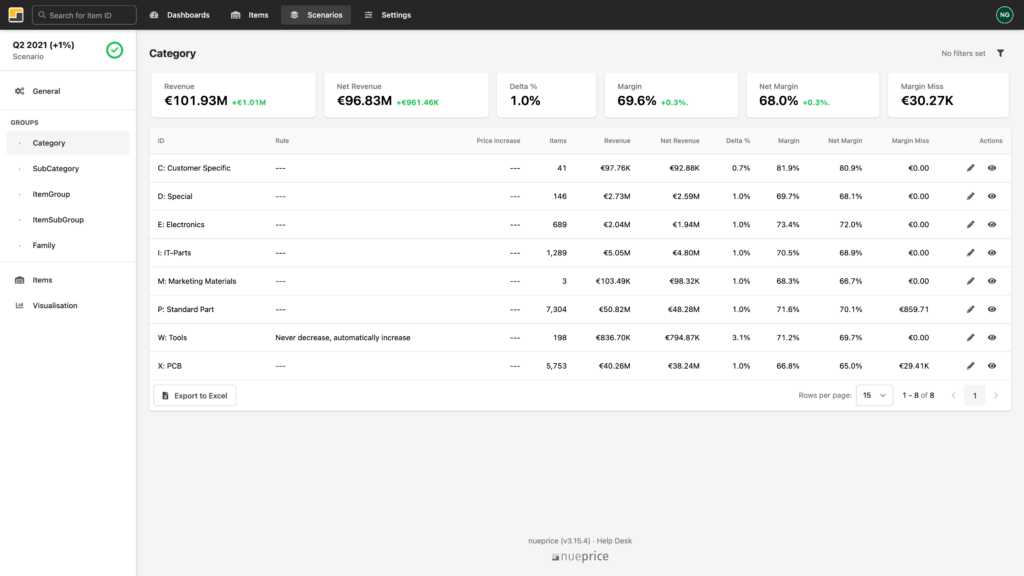By processing large amounts of data more quickly, a lot of time can be saved and flexibility can be gained with regard to short-term adjustments. This becomes particularly clear when looking at the annual price adaptation and the systemic support provided by nueprice.

Since it is tedious to determine prices for each (individual) part separately, NuePrice offers the elegant advantage that the prices of related products are related to each other. This simply means that as soon as properties are changed, for example in the category, the associated product prices are also adjusted based on previously defined criteria. This simplifies the work and makes the pricing of different products more effective and transparent.
Not only are change in, for example, spare parts prices and their impact on potential bundles or similar are simplified, but international pricing is also made more efficient. If the price changes in Germany, for example, the prices are also adjusted in the countries in which the product is also offered on the basis of a defined factor. This makes the pricing process easier and more transparent for employees and customers.
The annual price adjustment, the passing on of increased costs for a product family or the price increase of individual sales hits – there are numerous occasions to change prices. They all have one thing in common: direct impact on margins and profits as well as volume and customer satisfaction.
nueprice supports the price adjustment process by simulating different scenarios. In this way, it is possible to estimate in advance what effects cost changes or the adjustment to lowered competitor prices will have. The possible effect on important key figures is calculated in detail. In this way, various alternative courses of action can be compared and the best option selected.
The prices of the selected alternative can be exported or applied in nueprice.
